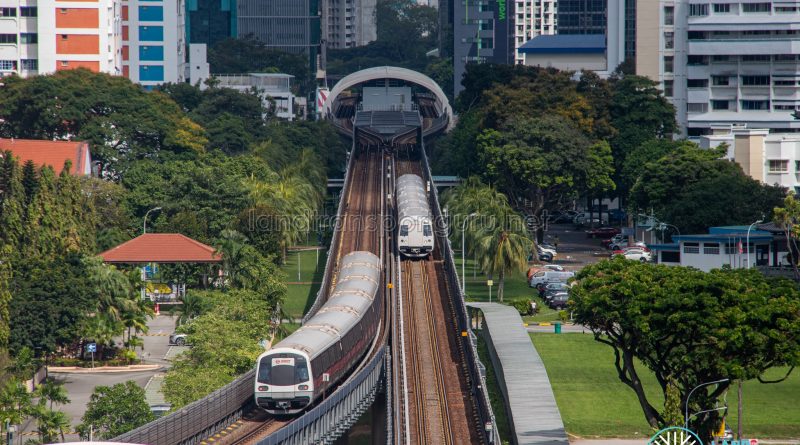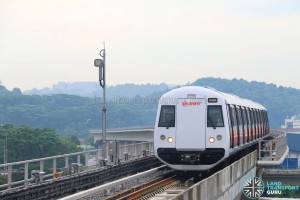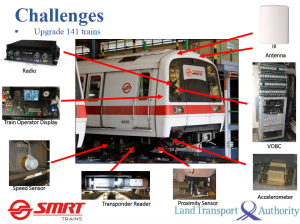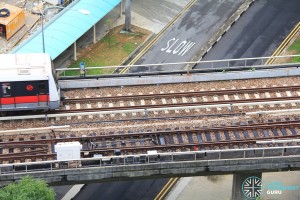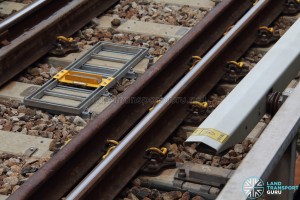The North South Line and East West Line (collectively called NSEWL) in Singapore have completed a decade-long upgrading works, as announced by Acting Minister for Transport Mr Chee Hong Tat on 25 October 2023.
With the NSEWL being Singapore’s oldest and most heavily utilised rail lines in the MRT network, a comprehensive renewal program was initiated in 2012 to renew and upgrade six core systems—signalling system, sleepers, third rail, power supply, track circuits, and rolling stock. As of October 2023, the majority of these upgrades have been completed.
With the completion of three core systems—sleepers, third rail, and signalling system—before 2020, subsequent efforts focused on finishing the remaining components, including the commissioning of new R151 trains in 2023 with a full rollout of all 106 trains due by 2026. Notably, the renewed track circuit, power supply systems, and R151 train fleets, all have condition monitoring features that enable proactive fault detection and thereby mitigate more severe disruptions.
These 6 core systems are:
1. New Communications-based train control (CBTC) signalling system
The NSEWL upgraded from a Fixed Block signalling system to a new moving-block CBTC signalling system supplied by Thales. Commissioned in 2017 and 2018 for both lines respectively, CBTC signalling was able to make use of existing track more efficiently, allowing the reduction of train intervals from 120 seconds to 100 seconds. This was accompanied by the delivery of 57 new trains (45 C151B and 12 C151C trains) to boost peak capacity of the NSEWL; the 5th and 6th generation of rolling stock to enter service on the NSEWL.
The CBTC upgrade also increased the level of automation on the NSEWL, with trains now able to operate automatically in all weather conditions without input from the Train Operator unless in the event of a disruption. The new signalling system can also adjust train speeds, reduce train bunching, and recover from delays. Trains are also able to operate on all tracks in both directions safely for greater flexibility in the event of a fault on one stretch of track.
Contract 1652A (C152A) – Replacement Signalling System for the North-South And East-West Lines was awarded to Thales in 2012, for S$195 million.
Related Article: CBTC Implementation: A review
2. Replacement of sleepers
Railway sleepers are rectangular pieces of wood or concrete that are used to support the running rails and hold them in place. A total of 188,000 timber sleepers were used across the NSEWL (NSL: ~96,000; EWL: ~92,000), which were nearing the end of service life and had to be replaced.
Between August 2013 and December 2016, a total of 188,000 wooden sleepers were replaced with concrete sleepers. Concrete sleepers have a longer lifespan of 50 years; twice as long as wooden sleepers.
- SMRT aims to complete sleeper replacement programme by 2016 (todayonline.com)
- SMRT introduces use of gantry cranes to speed up sleeper replacement on East-West Line | The Straits Times
- LTA | Completion of Sleeper Replacement Programme on the North-South and East-West Lines
3. Replacement of power rails
The power rail, also known as the third rail, is mounted parallel to the running rails. Trains are powered by electricity drawn from the power rails through a train’s current collector devices. Wear and tear caused by constant friction between power rails and trains necessitated their replacement.
Between September 2015 and August 2017, the NSEWL’s power rails were replaced. The new power rails and supporting assemblies feature improved designs for durability and ease of inspection. Conditioning monitoring features were also fitted to trains, to detect misalignments in the power rail.
4. New power supply system
An extensive power supply system upgrade was carried out to replace 1,300km of power cables, 250km of fibre optic cables located along the NSEWL tracks, 206 power transformers, 172 switchboards, and equipment in 171 sub-stations.
In addition, the old 64P touch voltage protection system was replaced with Voltage Limiting Devices (VLD). Traditionally, the 64P system halts operations when the touch voltage of the railway is elevated, triggering safety mechanisms to kick in. With the installation of the new VLD, the touch voltage will be mitigated without affecting rail operations.
The NSEWL’s high-voltage network was also reconfigured to ensure that no single point of failure would disrupt the entire rail network. Disconnector switches were also installed to compartmentalise the rail network power supply, ensuring that power substation failures will be localised, minimizing disruption to other stretches of the same line. According to the LTA, the system can also ‘automatically switch to an alternative source of supply during a power outage’ to improve the overall resilience of the power supply network.
Two contracts were Meiden Singapore Pte Ltd in 2018, at a sum of $500 million:
- Contract R153 – Power Supply Upgrading for North-South East-West Line – High Voltage Power Supply System and Associated Equipment
- Contract R153A – Power Supply Upgrading for North-South East-West Line – Traction Power Supply System, Power SCADA and Associated Equipment
Finally, the power supply upgrade has enhanced features for real-time monitoring, to improve fault detection and prediction, enabling issues to be rectified early.
- Contracts worth $573m awarded for upgrading works on North-South, East-West MRT lines | The Straits Times
- Power supply work to start this month on North-South, East-West lines, slated to finish by early 2020s | The Straits Times
5. New track circuit system
Track circuits are used in tandem with the CBTC signalling system to identify the position of trains on tracks, and detect broken rails in need of repair. In addition, a built-in condition monitoring system is used to enable pre-emptive fault detection and rectification.
Contract R152 – Track Circuit System for NSEWL was awarded to Siemens Pte Ltd / Engie Services Singapore Pte Ltd Consortium in 2018, for S$73 million.
6. New Alstom Movia R151 trains with fault detection capabilities
A total of 106 R151 trains were ordered to replace the first three generations of rolling stock (C151, C651, and C751B.) These trains entered passenger service earlier this year on 4 June 2023.
The trains come equipped with a modern Train Control & Management System (TCMS) which controls many train subsystems. This includes a self-test system that automatically checks that trains are fit for operation before daily service commences. 4 R151 trains will also be fitted with an Automatic Track Inspection (ATI) System, which allows concurrent monitoring of the running rails, track equipment, and sleepers during operations. The ATI System supplements existing track inspection activities to identify rail and trackside components that require maintenance in a more timely and efficient manner.
The interior cabins of the train were designed to include more open spaces for parents with strollers, wheelchair users, and commuters carrying their personal mobility devices (PMDs).
Contract R151 – MRT trains for East West and North South Lines was awarded to Bombardier (Singapore) Pte Ltd for S$827 million in 2018. A 10-year service support contract was also signed with SMRT Trains at a sum of more than S$300 million.
- Alstom reveals first of new trains for North-South, East-West Lines in Singapore | Alstom
- SMRT and Bombardier sign 10-year contract for long-term service support of trains for North-South, East-West lines
